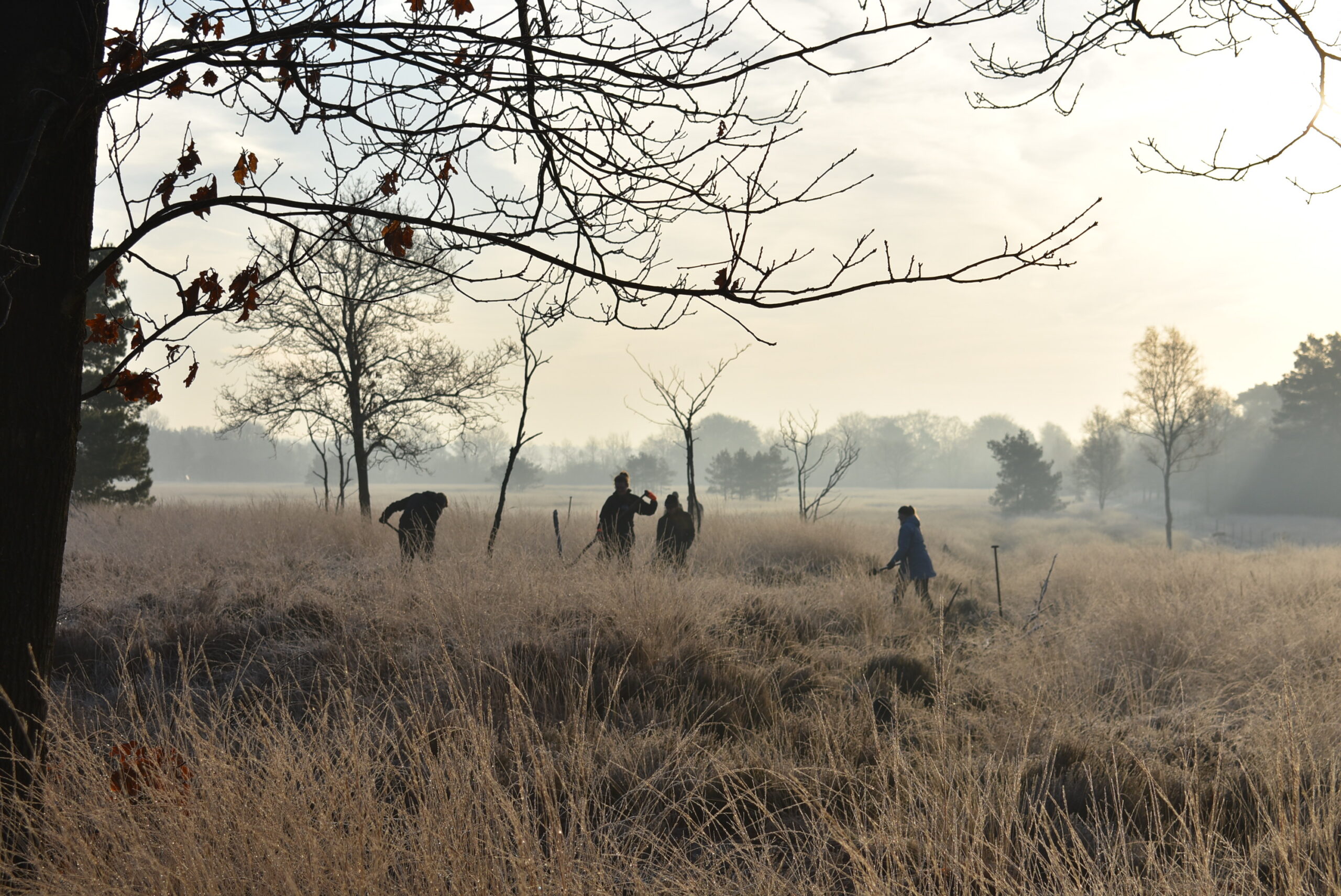Roman army camp found beyond Roman Empire’s northern frontier
26 May 2025

Photo: Julian de Haas
Students from the Constructing the Limes minor, together with archaeologists from Saxion, have discovered a Roman army camp on the Veluwe near Hoog Buurlo. “What makes this find so remarkable is that the camp lies beyond the northern frontier of the Roman Empire,” says Saskia Stevens (Utrecht University). At the time, the Empire’s outer border ran along the Rhine, roughly 25 kilometres further south.
The discovery forms part of the research project Constructing the Limes (C-Limes), led by Stevens, with Utrecht University acting as the coordinating institution. Within this project, researchers are working alongside societal partners to explore the functioning of borders, focusing particularly on the Lower Germanic Limes – the Roman Empire’s northern boundary, which ran through the Netherlands and western Germany.
Rare Roman army camp
The newly discovered camp covers an area of approximately nine hectares and features a ditch, a three-metre-wide defensive rampart, and several entrances. It is believed to have been a temporary marching camp, used during troop movements where soldiers typically stayed for only a few days or weeks. It is possible the camp near Hoog Buurlo served as a stopover en route to another camp at Ermelo-Leuvenum, about a day’s march away.

“Only four such temporary Roman camps are known in the Netherlands,” says Stevens. By contrast, there are dozens in Germany and even hundreds in Britain. “Through the C-Limes project, we are particularly interested in these kinds of camps because they provide valuable insights into Roman military presence and operations in frontier regions. They help us understand the routes taken by Roman troops and show how the Romans made extensive use of territories beyond the formal boundaries of their Empire.”
Archaeological research into the Roman camp
Very little of the camp is visible on the surface of the Veluwe. “All you can really see above ground are some very subtle variations in height,” Stevens explains. “The traces are mostly underground. The team was able to reveal them using advanced research methods such as LiDAR – a technology that uses laser pulses, similar to radar. Aerial photographs also helped researchers to identify the camp’s features.”
Subsequent archaeological investigations confirmed that the site was indeed a temporary Roman army camp. “The area was surveyed using a metal detector, and several trial trenches were excavated. Few artefacts were found, which makes it difficult to date the site precisely.” The traces suggest that the camp dates back to the second century CE.
One significant advantage of this approach is that the natural environment in which the camp lies has largely been preserved. The research was conducted with permission from the municipality of Apeldoorn and in close consultation with the landowner, Staatsbosbeheer (the Dutch Forestry Commission). Due to the area’s ecological significance, the fieldwork was carried out with ecological supervision. The research at Hoog Buurlo was financially supported by the Nederlandse Limes Samenwerking (Dutch Limes Collaboration) and the municipality of Apeldoorn.
This article was written by Utrecht University and was previously published here
